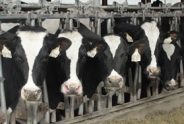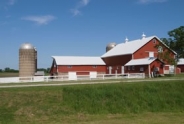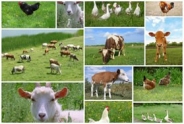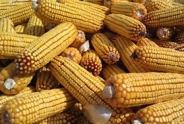Dystocia and Difficult Calvings: A Perspective from Dam and Calf (Part 2)
Dystocia and Difficult Calvings: A Perspective from Dam and Calf (Part 2)
By: Casey Havekes (Dairy Specialist, North Country Regional Ag Team) & Betsy Hicks (Dairy Specialist, South Central New York Dairy & Field Crops Team)
It is important to remember that the dam is not the only one that experiences the stress of a difficult calving, but the newborn calf does as well. In Part 2 of this series (click here to access Part 1), we will discuss how dystocia impacts the new calf. The information shared below was originally shared as part of Cornell Cooperative Extension's Critical Calf Care series. You can find links to the recordings by clicking here, and supplemental materials by clicking here.
Calves born to difficult calvings are referred to as dystocia calves. Dystocia can have both immediate and long-term impacts on the calf, and research has shown that these calves may have reduced survival rates to adulthood and reduced milk production once they are an adult. Included in the list of immediate impacts on the calf is acidosis. Acidosis arises as the result of asphyxia, which occurs with the premature rupture of umbilical vessels. This terminates oxygen supply to the fetus from the placenta, while carbon dioxide accumulates in the bloodstream creating an acid-base imbalance. When this occurs, there is inadequate oxygen uptake by the placenta or lungs, and consequently there is inadequate oxygenation of body tissue cells. In animals with asphyxia, the concentration of carbon dioxide produced by the cells increases in the blood, because its elimination via the placenta or lungs is impaired, and results in respiratory acidosis. A mild case of acidosis with a pH of slightly more than 7.2 occurs in normal calves immediately after unassisted birth and is considered physiologically normal; however, if respiratory acidosis is severe and not corrected, it can further lead to metabolic acidosis. In the absence of oxygen, body tissue cells derive energy from anaerobic glycolysis, which results in the production of lactate and leads to metabolic acidosis. One of the most detrimental impacts of this metabolic acidosis is the decreased colostrum intake and IgG absorption. Researchers demonstrated that acidotic calves had a 52% decrease in colostrum intake and a 35% decrease in IgG concentrations compared to non-acidotic calves (Murray et al., 2015). Part of this is due to decreased absorptive ability for these calves, but the other part is behavioral and related to the fact that dystocia calves are weaker, take longer to stand, and have poorer suckle reflexes when compared to calves from a normal birth.
Despite dystocia calves having a few strikes against them right from the get-go, there are strategies we can implement to help them succeed. The first is to sit the calf upright in a position called sternal recumbency, see Figure 1. This position will allow her lungs to expand to their full potential and will facilitate breathing. The next strategy is to further stimulate breathing; once oxygen starts entering the lungs and carbon dioxide starts leaving, this state of metabolic acidosis will begin to correct itself. Sitting the newborn calf upright is the first step, but you can also tickle the inside of her nose with a piece of straw, or pour cold water over her head which will trigger a gasp reflex. Additionally, you can somewhat aggressively rub the calf with a dry towel to promote breathing; at the same this is going to help her warm up. One very important point is that you should never hang the calf upside down or swing her to try to get fluid out of her lungs. Research has shown that the fluid that is expelled in this act comes from the stomach (not the lungs) and is beneficial to the calf. Additionally, this increases the risk of the calf aspirating on this fluid, as well as putting more pressure on the lungs from the abdomen.
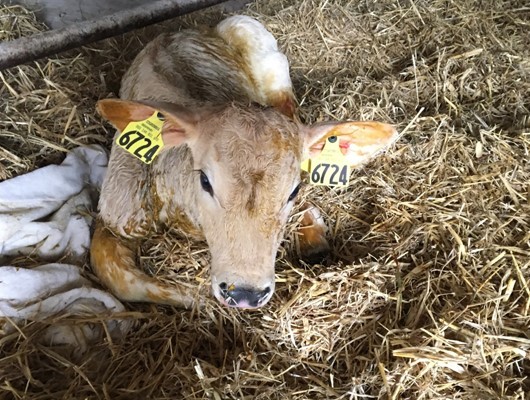
Figure 1. Calf in "sternal recumbency" position. Photo credit: https://www.calf-tel.com/en/ca...
Once the calf is breathing, the next strategy is to keep the newborn calf warm. In order to stay warm newborn calves break down brown fat and engage in physical activity, both of which are compromised for dystocia calves. Using a heat lamp, dry bedding, and calf jackets can help facilitate this process if a dystocia calf needs help staying warm. Expanding the calf's blood volume is another important factor and this can easily be accomplished by feeding colostrum. Dystocia calves often lack a suckle reflex and can be referred to as "dummy calves", this makes colostrum delivery extremely important. We want to make sure the new calf is getting the best quality colostrum possible and if she does not want to drink, we recommend tube feeding her. In fact, recent research has demonstrated that IgG absorption is not different for calves whether they are fed by tube feeder or by bottle. It is also important to pay attention to how the colostrum is being warmed if you are feeding frozen colostrum. We want to make sure that is being warmed slowly and that may take some careful planning on your part. When placing the colostrum in water to thaw it out, make sure the water is not too hot (< 120°F) as IgG proteins will be denatured and ineffective for the calf. A good way to test is this is by putting your hand in the water; if it is too hot for you to comfortably rest your hand in, then it is too hot for warming the colostrum.
Lastly and likely the simplest strategy, is just to monitor the new calf extra closely. This calf is going to be more susceptible to disease as compared to calves from normal births. We encourage you to watch out for behavioral indicators of disease as those will often present themselves sooner than physiological signs. Some farms put some type of special indicator on the calf or her hutch/pen, such as a pink clothespin or calf collar, as a reminder that she was born to dystocia and may require special attention. In some cases, the newborn calf may benefit from a non-steroidal anti-inflammatory drug (NSAID). This strategy can be extremely useful, but requires special planning with your veterinarian as it is considered off-label use for that class of medicine.
As discussed in Part 1, dystocia has a huge economic impact to the dairy and beef industries with costs coming from both the dam and the calf. Attention to this time period will help ensure the best outcome for them both. For the calf, the various strategies discussed above will help increase the likelihood of her survival, improve resistance to disease, and will promote growth and vitality. If you have dystocia problems on your farm, please reach out to one of us (Betsy Hicks: bjh246@cornell.edu; 607-391-2673 / Casey Havekes: cdh238@cornell.edu; 315-955-2059) and we can help you troubleshoot this challenging area.
Upcoming Events
Boots in the Barn: Cornell Dairy Research Updates
January 13, 2026
January 20, 2026
January 27, 2026
February 3, 2026
February 10, 2026
February 17, 2026
February 24, 2026
Join us for some or all!
Advanced Hoof Health Program
January 15, 2026
Belfast, NY
Who should attend?
- Professional hoof trimmers
- Dairy farm owners or managers in charge of farm foot health
Topics include:
- How to Create a Strategic Trimming Program for your Dairy
- The Latest in Lameness Technology for the Dairy Industry
- Housing and Flooring Design: Its Role in Hoof Care
NY Pork Producers Connection Breakfast - Geneseo
January 17, 2026 : Pork Producers Connection Breakfast - Geneseo
Geneseo, NY
All pork producers are invited to join the New York Pork Producers for a free hot farmer's breakfast, at which they'll catch up on topics including the pork to dairy barn conversion series, NYPP digital campaigns, and 840-RFID tags.
Announcements
No announcements at this time.


